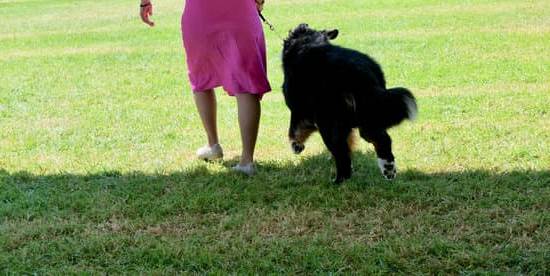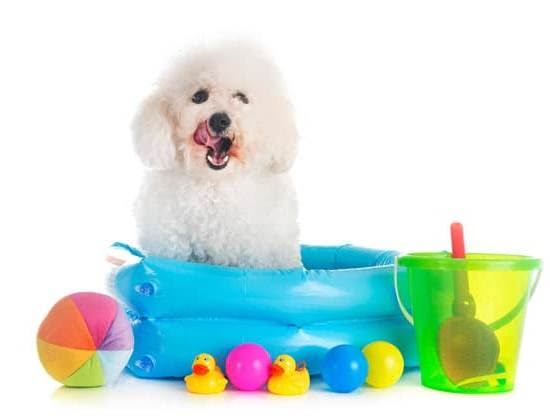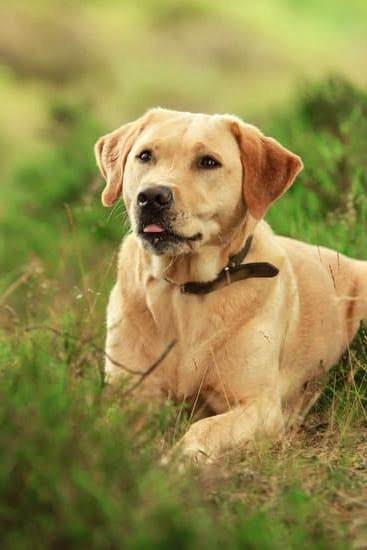Training a dog to ignore distractions is an essential part of their obedience and behavior. Whether it’s in a public setting, around other animals, or even within the comfort of your own home, minimizing distractions can ensure that your dog listens and obeys commands effectively. In this article, we will explore the importance of this type of training and provide valuable tips on how to achieve it successfully.
Many pet owners struggle with their dogs becoming easily distracted, making it challenging to control them in various situations. By setting the foundation with basic obedience commands and understanding what causes distractions for your dog, you can begin the process of teaching them to focus and ignore external stimuli. Positive reinforcement, gradual exposure to distractions in controlled settings, and consistent practice are all key components in achieving success in this training.
With the right techniques and ongoing dedication, you can redirect your dog’s attention and encourage them to stay focused amidst potential triggers. Additionally, applying these training techniques in real-life scenarios will help solidify their learned behavior and improve their overall responsiveness. Understanding the significance of training a dog to ignore distractions is crucial for both their safety and well-being as well as creating a harmonious relationship between pet and owner.
Setting the Foundation
Establishing basic obedience commands is crucial when it comes to training a dog to ignore distractions. Before you can expect your furry friend to resist temptation and maintain focus in the face of alluring stimuli, they must first have a solid understanding of fundamental commands such as sit, stay, come, and leave it. These commands lay the groundwork for building self-control and impulse management in your canine companion.
Teaching these basic obedience commands can be accomplished through consistent training sessions using positive reinforcement techniques. By associating each command with a specific action and rewarding your dog when they follow through, you can effectively communicate what is expected of them. This not only builds a strong bond between you and your pet but also establishes a sense of trust and mutual respect that is essential for successful distraction-ignoring training.
In addition to verbal cues, incorporating hand signals as visual commands can further reinforce your dog’s understanding of basic obedience. Consistency is key – practicing these commands in various environments with increasing levels of difficulty will help solidify your dog’s response to them. By establishing a firm foundation in basic obedience, you are laying the groundwork for successfully teaching your dog how to ignore distractions in any situation.
Identifying Distractions
Training a dog to ignore distractions is an essential skill for pet owners, as it can help prevent unwanted behaviors and ensure the safety of your furry friend. Identifying what causes distractions for your dog is the first step in effectively training them to ignore these distractions. By understanding the triggers that lead to your dog’s loss of focus, you can tailor your training approach to address specific situations and behaviors.
There are various factors that can cause distractions for dogs, such as environmental stimuli, other animals, or even certain sounds or smells. It’s important to observe your dog in different settings and situations to pinpoint what triggers their attention and leads to distraction. Once you have identified the specific distractions that affect your dog, you can begin implementing strategies to desensitize them and build their focus and resilience.
Strategies for Identifying Distractions
- Observe your dog’s behavior in different environments
- Take note of specific triggers that result in distraction
- Consult with a professional trainer or behaviorist for insights
- Experiment with various stimuli to gauge your dog’s response
Understanding the root cause of your dog’s distractions will enable you to develop a targeted training plan that addresses their specific needs. Whether it’s loud noises, unfamiliar people, or other animals, being aware of what causes distractions for your dog is crucial in creating a successful training regimen that promotes focus and obedience.
The Role of Consistency in Training
- Revisit key environments where distractions occur regularly
- Consistently use the same tools and techniques during training sessions
- Monitor progress and adjust training methods based on results
With consistency and patience, along with a clear understanding of what distracts your dog, you can lay a solid foundation for effective distraction-ignoring training. This sets the stage for implementing positive reinforcement techniques and gradually exposing your dog to controlled distractions during training sessions. By identifying distractions from the outset, you can tailor a personalized plan that equips your canine companion with the skills needed to remain focused and obedient in any situation.Advertisement.
Positive Reinforcement
When it comes to training a dog to ignore distractions, positive reinforcement is a key component. By using treats and rewards, you can encourage your dog to focus on you and ignore potential distractions in the environment. Here are some tips on how to effectively use positive reinforcement in your training:
- Use high-value treats: When training your dog to ignore distractions, it’s important to use treats that are highly attractive to them. This could be pieces of cooked chicken, cheese, or any other food that your dog absolutely loves. These high-value treats will serve as strong motivators for your dog to focus on you.
- Timing is everything: When using treats as rewards, timing is crucial. Make sure to immediately reward your dog as soon as they exhibit the desired behavior of ignoring a distraction and focusing on you instead. This will help reinforce the connection between their focus and the reward.
- Consistency is key: In order for positive reinforcement to be effective, it’s important to consistently reward your dog whenever they successfully ignore a distraction and redirect their attention back to you. This consistency will help solidify the desired behavior over time.
In addition to using treats as rewards, you can also incorporate other forms of positive reinforcement such as praise, toys, or playtime. The key is to make focusing on you more rewarding and enticing for your dog than paying attention to distractions in the environment.
Overall, positive reinforcement can be a powerful tool in training your dog to ignore distractions. By using high-value treats, timing the rewards effectively, maintaining consistency, and incorporating various forms of positive reinforcement, you can encourage your dog to stay focused on you even in distracting environments.
Gradual Exposure
Training a dog to ignore distractions is an essential skill that every pet owner should work on with their furry companion. One crucial aspect of this training process is gradual exposure, which involves introducing distractions in controlled environments to help the dog learn how to remain focused despite external stimuli.
To begin training your dog to ignore distractions, it’s important to start in a quiet and familiar environment. This could be your home or a peaceful outdoor space where there are minimal disturbances. By starting in a controlled environment, you can set the stage for success and gradually increase the level of distraction as your dog becomes more adept at focusing on your commands.
One effective method for gradual exposure is using the “distraction gradient” approach. This means starting with mild distractions, such as a quiet passerby or gentle sounds, and then gradually increasing the level of distraction over time.
For example, if you’re training your dog at home, you can start by introducing minor distractions like dropping a small object on the floor or making soft noises. As your dog gets better at ignoring these small interruptions, you can progress to slightly more distracting scenarios.
It’s important to remember that patience and consistency are key when using gradual exposure to train a dog to ignore distractions. Each dog will have their own pace of learning, so it’s essential to go at a pace that is comfortable for them while still providing enough challenge for growth. With time and practice, you’ll see significant improvement in your dog’s ability to focus even in the presence of various distractions.
| Training Method | Description |
|---|---|
| Distraction Gradient Approach | This method involves starting with mild distractions and gradually increasing the level of distraction over time. |
| Patience | Consistency and patience are crucial when using gradual exposure for training. |
Practice Makes Perfect
Setting Realistic Expectations
Training a dog to ignore distractions takes time, consistency, and patience. It is important to set realistic expectations and understand that this process may not happen overnight. Different dogs will progress at different rates, so it’s important not to get discouraged if your dog doesn’t immediately grasp the concept of ignoring distractions. Remember that every small step in the right direction is progress.
Consistent Training Schedule
Consistency is key when training a dog to ignore distractions. Establish a regular training schedule and stick to it. Daily training sessions, even if they are just 10-15 minutes long, can make a big difference in helping your dog maintain focus and ignore distractions. Consistency also means using the same commands, cues, and rewards each time you train.
Patient Reinforcement
When training your dog to ignore distractions, it’s important to be patient with their progress. Avoid becoming frustrated or impatient if your dog seems to be struggling with certain distractions or commands. Remember that positive reinforcement, patience, and understanding are essential for creating a strong bond between you and your furry friend. Celebrate the small victories and keep a positive attitude throughout the training process.
By consistently setting realistic expectations, sticking to a regular training schedule, and maintaining patience in reinforcing positive behavior, you can effectively train your dog to ignore distractions and become a well-behaved companion in various environments.
Redirecting Attention
Using Verbal Cues and Commands
One effective technique for refocusing your dog’s attention away from distractions is to use verbal cues and commands. By teaching your dog specific phrases or commands, such as “look at me” or “focus,” you can redirect their attention back to you when they become distracted. It is important to consistently use these cues during training sessions and gradually increase the level of distractions to reinforce the behavior.
Engaging Toys and Interactive Play
Another way to redirect your dog’s attention from distractions is by using engaging toys and interactive play. By incorporating toys that require your dog’s focus, such as puzzle toys or interactive games, you can redirect their attention away from external distractions. This technique not only helps in refocusing your dog but also provides mental stimulation and reinforces positive behavior through play.
Desensitization and Counterconditioning
Desensitization and counterconditioning are techniques that involve gradually exposing your dog to distractions in a controlled environment while providing positive associations. For example, if your dog tends to get distracted by other dogs during walks, start by having them at a distance where they can still focus on you.
Over time, gradually decrease the distance while providing treats or rewards for remaining focused on you. This technique helps in changing your dog’s emotional response to distractions and builds their ability to ignore them.
By implementing these techniques for refocusing your dog’s attention, you can effectively train them to ignore distractions and strengthen their obedience skills. Consistency, patience, and positive reinforcement are key components in this training process, ultimately leading to a well-behaved and focused companion in various situations.
Real-Life Application
Training a dog to ignore distractions is an essential skill that can greatly improve the quality of life for both the pet and its owner. Once a dog has mastered the basic obedience commands, it is time to apply these skills in real-life situations. This section outlines how to effectively transition from controlled environments to everyday scenarios where distractions are inevitable.
One effective way to apply training techniques in everyday situations is to start with low-level distractions and gradually increase the difficulty level. For example, when walking your dog, begin in a quiet, familiar neighborhood before progressing to busier areas with more people, other animals, or loud noises. It’s important to be patient and take things at your dog’s pace, gradually building up their ability to focus amidst various stimuli.
Another key aspect of real-life application is consistency in using positive reinforcement. Whenever your dog successfully ignores a distraction and focuses on you instead, make sure to reward them with treats, praise, or toys. This will reinforce the desired behavior and encourage them to continue ignoring distractions in the future.
Additionally, it’s essential to remain calm and composed during training sessions in real-life situations. Dogs are highly attuned to their owner’s emotions, so staying relaxed and confident will help convey a sense of control to your pet. By employing these techniques consistently and patiently in everyday scenarios, you can effectively train your dog to ignore distractions and become a well-behaved companion in any environment.
Troubleshooting
Training a dog to ignore distractions can be challenging, and it’s common for pet owners to encounter difficulties along the way. One common challenge is overcoming a dog’s natural instinct to react to stimuli in their environment.
Dogs are naturally curious creatures, so it’s understandable that they may struggle to ignore certain distractions. Additionally, some dogs may have a stronger prey drive or herding instinct, making it even more difficult for them to stay focused in the presence of distractions.
One solution to this challenge is to gradually increase the difficulty of training exercises. Start in a controlled environment with minimal distractions and gradually introduce more stimulating elements as your dog becomes more proficient at ignoring them. This will help your dog build up their ability to focus amidst distractions over time.
Another common challenge when training a dog to ignore distractions is managing your own frustration as an owner. It can be frustrating when your dog doesn’t seem to make progress or continues to be easily distracted. However, it’s important to remain patient and consistent with your training efforts.
Dogs are highly attuned to their owners’ emotions, so staying calm and positive during training sessions will have a significant impact on their ability to learn. Remember that every dog learns at their own pace, and it may take time for them to fully grasp the concept of ignoring distractions.
In addition, it’s important for pet owners to recognize that some dogs may have individual triggers that are particularly challenging for them to ignore. Understanding what specifically causes distraction for your dog can help you tailor your training approach accordingly.
For example, if your dog gets overly excited around other animals or has a fear of certain sounds, you can work on desensitizing them to these triggers through gradual exposure and positive reinforcement techniques. Identifying and addressing these specific challenges will ultimately lead to more successful distraction-ignoring training for your furry companion.
Conclusion
In conclusion, training a dog to ignore distractions is an essential skill that not only enhances their obedience but also ensures their safety in various environments. By setting a solid foundation of basic obedience commands, identifying the specific distractions for your dog, and using positive reinforcement techniques, you can effectively train your furry companion to maintain focus even in the midst of tempting diversions.
Consistency and patience are key in this process, as gradual exposure to distractions and redirection tactics will help solidify their training.
As a result of successfully training your dog to ignore distractions, you will experience the benefits of a well-behaved and attentive pet. Whether it’s walking through a crowded park or having guests over at home, your dog’s ability to stay focused will make these situations much more enjoyable for both you and your canine companion.
It will also strengthen the bond between you and your pet, as they learn to trust and rely on your guidance in challenging situations.
Overall, with dedication and the implementation of the techniques discussed in this article, you can achieve success in training your dog to ignore distractions. Remember that every dog is unique and may require different approaches, so don’t be discouraged by setbacks – troubleshooting common challenges and seeking professional guidance when needed can help overcome any obstacles.
The investment of time and effort into this training will undoubtedly result in a happier, well-trained dog that can confidently navigate various real-life scenarios.
Frequently Asked Questions
How Do I Train My Dog to Be Less Distracted?
Training a distracted dog requires patience and consistency. Start by using positive reinforcement to reward moments of focus. Gradually increase distractions, rewarding your dog for maintaining attention. Incorporating obedience training can also help improve focus.
How Do I Train My Dog to Ignore?
Training a dog to ignore specific stimuli involves desensitization and counter-conditioning techniques. This means gradually exposing the dog to the trigger while redirecting their attention to a positive behavior or command. Consistency and patience are key in this training process.
How Do You Train a Dog That Won’t Focus?
When a dog struggles to focus, it’s important to address any underlying issues such as anxiety or lack of mental stimulation. Incorporating short training sessions, interactive toys, and mental exercises can help improve the dog’s ability to concentrate. It’s also crucial to create a calm and conducive environment for training sessions.

Welcome to the blog! I am a professional dog trainer and have been working with dogs for many years. In this blog, I will be discussing various topics related to dog training, including tips, tricks, and advice. I hope you find this information helpful and informative. Thanks for reading!





